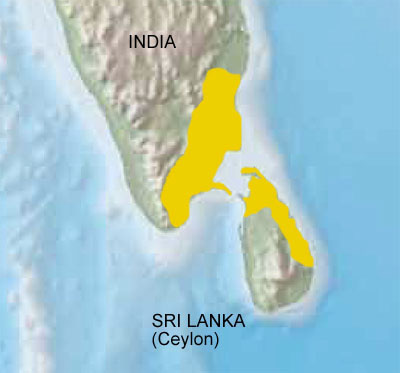mobile View, to the German Version tap the flag
![]()



It is convenient to reduce the conflict between Tamils and Singhalese on Ceylon Island the fact, that the British colonial power recruited Tamils as laborers on the tea plantations in the country since 1828. The state of Sri Lanka would no longer accept these Tamils after its independence, and they resettled many Tamils back to India since 1964. Against that arised resistance of the Tamils, which culminated in a bloody civil war since 1983. Here fight the LTTE Militia (Liberation Tigers of Tamil Eelam) on the side of the Tamils against the government of Sri Lanka. The main claim of the Tamils was the establishment of an independent, or at least autonomous State Tamil Eelam in the north and East of the island. The civil war went through several phases, initially from 1983 to 1987, culminating in a peace agreement between the Sri Lankan government and the Tamil LTTE militia. Indian troops monitored the peace and were attacked by the LTTE militia in 1988. In 1990, the Indian troops left the Island of Ceylon. In a second phase of the civil war, from 1990 to 1995, Jaffna (the Tamil capital) was captured by government troops. A third phase, from 1996 to 2009, which was relatively quiet, culminated in a sudden offensive by government forces, which ended with the complete military victory of the Sri Lankan government forces over the LTTE militia. That was the end of armed Tamil separatism. It is wrong to blame the colonial power of United Kingdom for this ethnic conflict on Ceylon, because they forget to see that Tamils immigrate on the island since the 3rd century B.C., made right invasions and established own kingdoms on the island, long times befor the first European set his foot on the island. The ethnic differences are added by religious, because Tamils are Hindus in contrast to the buddhist Singhalese.
Source: Volker Preuß
![]()
